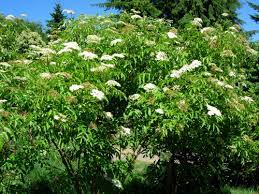Bareroot Plant Material
Elderberry
Elderberry
Couldn't load pickup availability
25 plants per unit
Sambucus canadensis, or Elderberry, is a shrub native to more than 1/2 of Kansas except the western 1/4 of the state and grows naturally along streams, in fencerows, and in open areas where water is available but not standing. The shrub reaches a height of about 6-10 feet tall and it is best known for its fruit that are a favorite of wildlife and are also used for jellies and jams. The wood’s pith is easily hollowed out and in the past was used to make whistles and neckerchief slides.
Leaves, Stems and Fruit
Leaves are alternate, pinnately compound consisting of 3-7 leaflets, 5 to 9 inches long, and 1 to 2 inches wide. They are paired except at the end, elliptical, and sharply sawtoothed . The bark is brown to dark grey with raised dots. The fruit are small round berries that mature in September to August and are dark purple to black in color when ripe.
Use
Wildlife Habitat - Excellent food source. Animals of varying species love the fruit and finding fruit for human consumption may be difficult because of animal competition.
Human Consumption - The fruit has a very sweet taste that is commonly made into pies, jellies, and wine. However, the rest of the plant contains calcium oxalate and care should be taken so that it is not ingested. Cooking the berries makes them safe to consume and the taste of the plant (other than the berries) is very bitter; therefore ingestion is not likely but if large amounts were to be eaten, problems could include upset stomach and breathing difficulties, among other symptoms.
Adaptation and Soil
Elderberry does best on open sites along creeks and other places where moisture is available but does not have prolonged standing water. It will tolerate occasional flooding though and is found through the eastern ½ of the state.
Spacing
Space seedlings about 4 feet apart.
Culture
One-year-old, bare-root seedlings 18 to 24 inches tall are used in plantings. They will develop faster with good weed and grass control.
Pests
Generally there are few disease or insect problems with this plant. It can be infested with Powdery Mildew as well as borers and other leaf-chewing insects; however, none of the pests listed have shown to have severe impacts on the plant.



